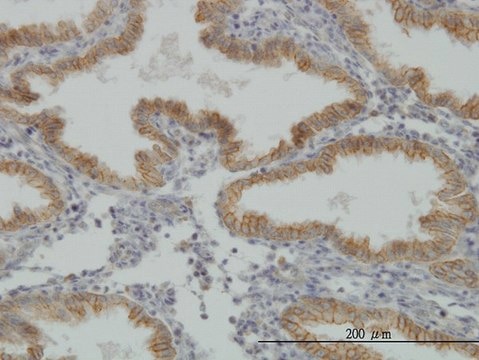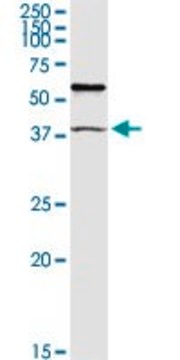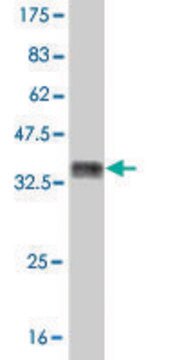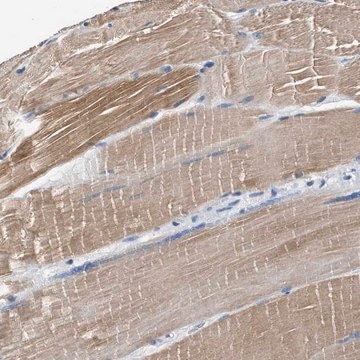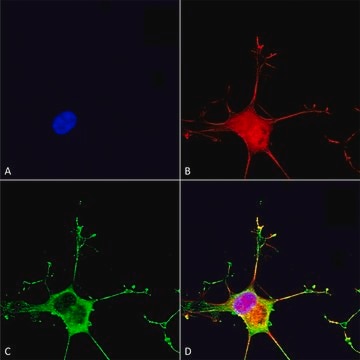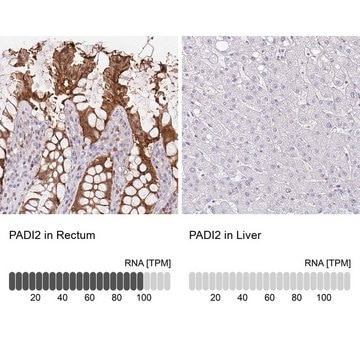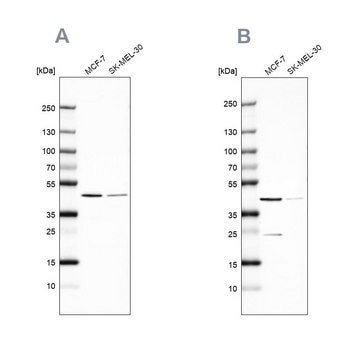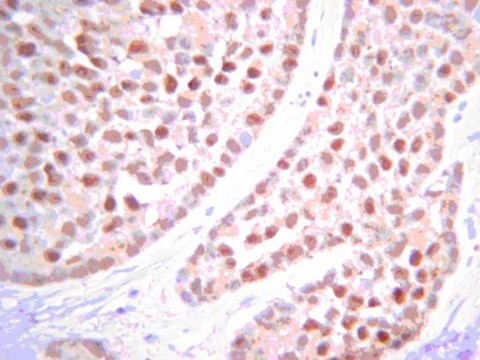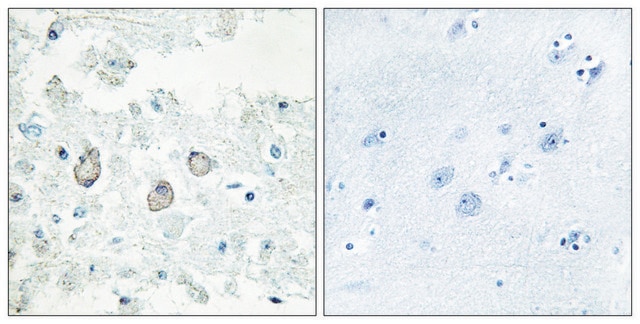ABS549
Anti-MuSK Antibody
serum, from rabbit
Synonym(s):
Muscle, skeletal receptor tyrosine-protein kinase, Muscle-specific tyrosine-protein kinase receptor, MuSK, Muscle-specific kinase receptor
About This Item
Recommended Products
biological source
rabbit
Quality Level
antibody form
serum
antibody product type
primary antibodies
clone
polyclonal
species reactivity
mouse, human
technique(s)
immunohistochemistry: suitable
immunoprecipitation (IP): suitable
western blot: suitable
NCBI accession no.
UniProt accession no.
shipped in
wet ice
target post-translational modification
unmodified
Gene Information
human ... MUSK(4593)
General description
Immunogen
Application
Signaling
Signaling Neuroscience
Immunohistochemistry Analysis: A representative lot detected MuSK in mouse soleus muscle tissue (Simeone, L., et al. (2010). The Journal of Neuro. 30(19):6620-6634).
Immunoprecipitation Analysis: A representative lot immunoprecipitated MuSK in C2C12 cell lysate (Simeone, L., et al. (2010). The Journal of Neuro. 30(19):6620-6634).
Quality
Western Blotting Analysis: A 1:1,000 dilution of this antibody detected MuSK in 10 µg of HEK293 cell lysate.
Target description
Physical form
Storage and Stability
Handling Recommendations: Upon receipt and prior to removing the cap, centrifuge the vial and gently mix the solution. Aliquot into microcentrifuge tubes and store at -20°C. Avoid repeated freeze/thaw cycles, which may damage IgG and affect product performance.
Disclaimer
Still not finding the right product?
Give our Product Selector Tool a try.
Storage Class
12 - Non Combustible Liquids
wgk_germany
WGK 1
flash_point_f
Not applicable
flash_point_c
Not applicable
Certificates of Analysis (COA)
Search for Certificates of Analysis (COA) by entering the products Lot/Batch Number. Lot and Batch Numbers can be found on a product’s label following the words ‘Lot’ or ‘Batch’.
Already Own This Product?
Find documentation for the products that you have recently purchased in the Document Library.
Our team of scientists has experience in all areas of research including Life Science, Material Science, Chemical Synthesis, Chromatography, Analytical and many others.
Contact Technical Service